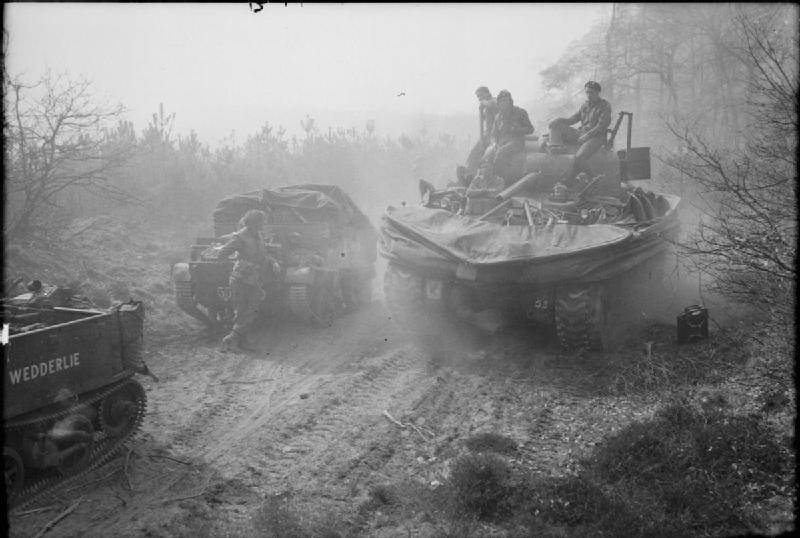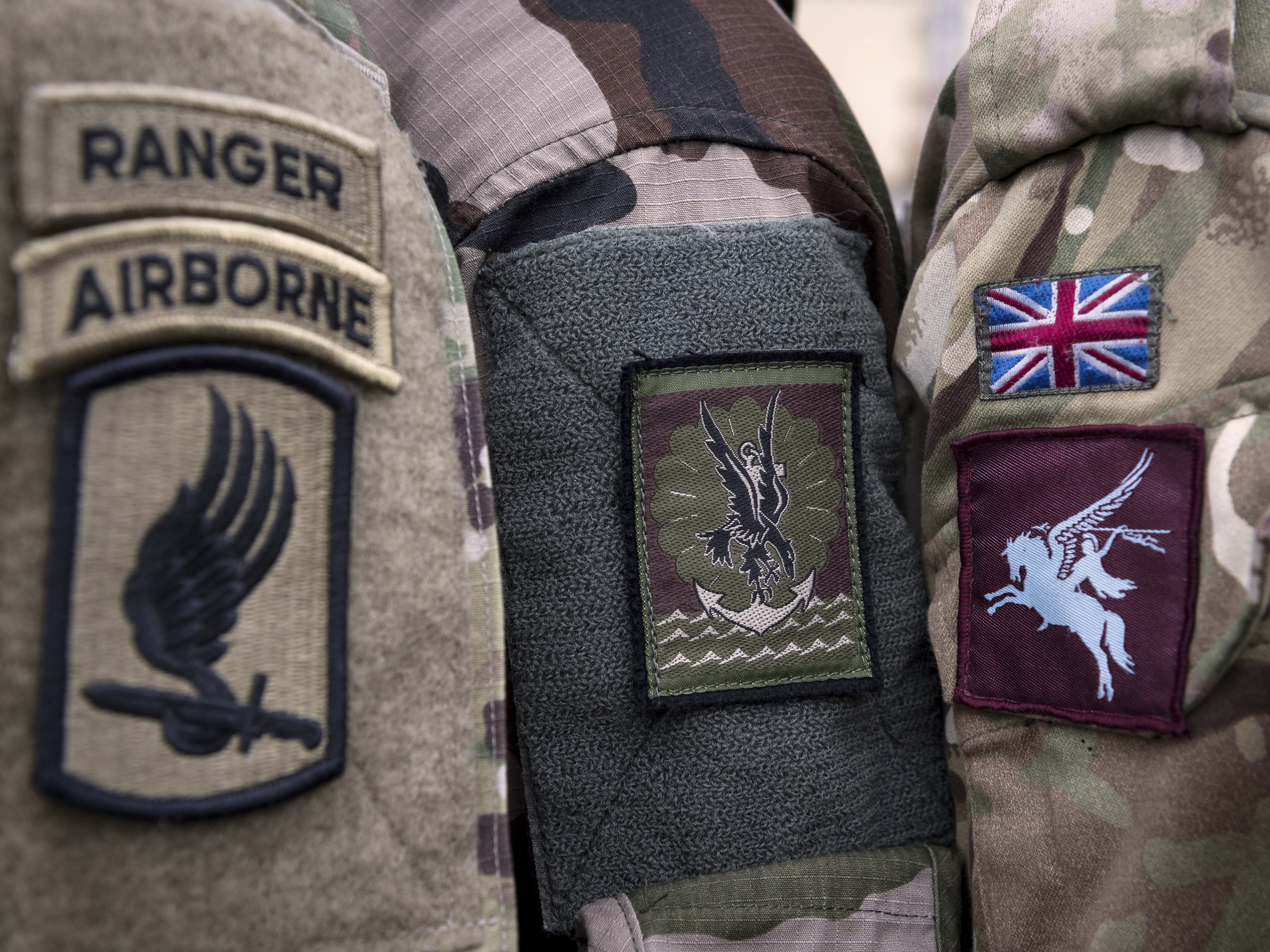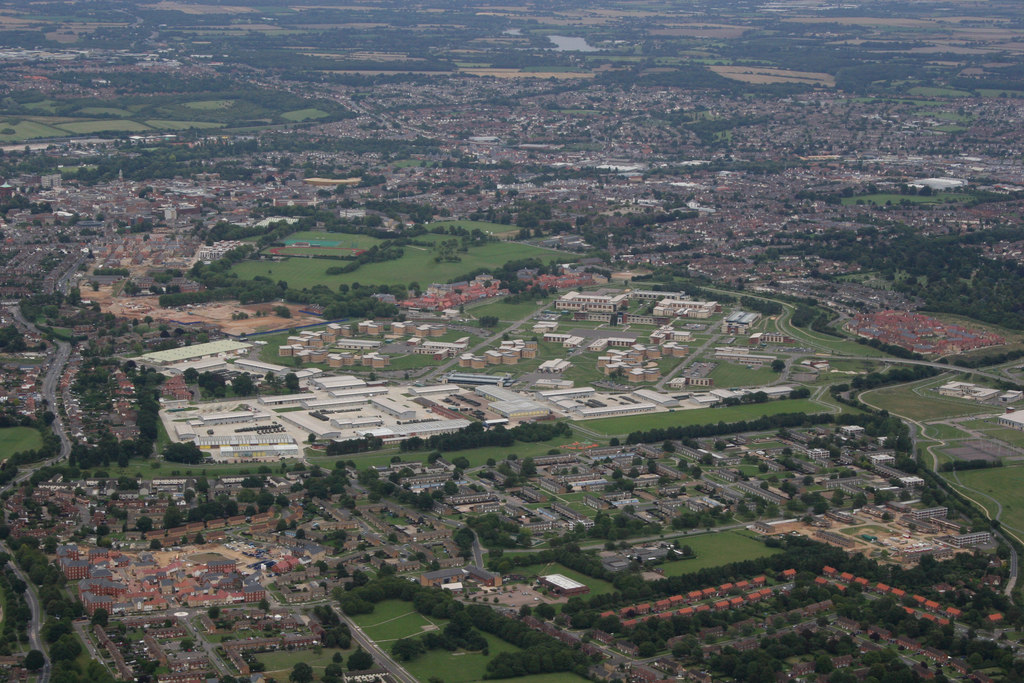|
Support Command (United Kingdom)
Regional Command, formerly Support Command, is a two-star command of the British Army. It is the Army's HQ for the UK, Nepal and Brunei. It delivers Real Life Support to the Army and controls the UK Stations and Garrisons. It is also responsible for engagement with the civilian community and acts as the proponent for UK Operations. Support Command, formed in 2011, became Regional Command in 2015. History Support Command was formed on 1 November 2011 and absorbed the functions of the 4th Infantry Division on 1 January 2012 and of 2nd Infantry Division and 5th Infantry Division from 1 April 2012. Support Command is headquartered at Aldershot Garrison in South East England. Initial published tasks included: *Lead on the Firm Base Concept for Commander Land Forces from 1 November 2011. *Deliver Firm Base support as defined by Project AVANTI from 3 January 2012 within 2nd (South East) Brigade, 43rd (Wessex) Brigade and 145 (South) Brigade boundaries and for the remainder within b ... [...More Info...] [...Related Items...] OR: [Wikipedia] [Google] [Baidu] |
Formation (military)
Military organization or military organisation is the structuring of the armed forces of a State (polity), state so as to offer such military capability as a military policy, national defense policy may require. In some countries paramilitary forces are included in a nation's armed forces, though not considered military. Armed forces that are not a part of military or paramilitary organizations, such as Insurgency, insurgent forces, often mimic military organizations, or use ''ad hoc'' structures, while formal military organization tends to use hierarchical forms. History The use of formalized Military rank, ranks in a hierarchical structure came into widespread use with the Roman Army. In modern times, executive control, management and administration of military organization is typically undertaken by governments through a Ministry (government department), government department within the structure of public administration, often known as a Ministry of defence, ministry ... [...More Info...] [...Related Items...] OR: [Wikipedia] [Google] [Baidu] |
38 (Irish) Brigade
The 38th (Irish) Brigade, is a brigade formation of the British Army that served in the Second World War. It was composed of North Irish line infantry regiments and served with distinction in the Tunisian and Italian Campaigns. Following the end of the war, the brigade was disbanded, but was reformed in sixty years later in 2007 and remains the regional formation for Northern Ireland. Second World War The 38th Infantry Brigade came into existence on 13 January 1942 by the re-designation of the 210th Independent Infantry Brigade (Home), a Home Defence formation organised in October 1940. The 210th Brigade had been serving in the Dorset County Division. When that division was disbanded on 24 November 1941, 210 Brigade transferred to the 1st Infantry Division. By then, all of 210 Brigade's English home defence battalions had been posted away and were replaced by the 1st Battalion, Royal Irish Fusiliers, the 6th Battalion, Royal Inniskilling Fusiliers and the 2nd Battalion, London ... [...More Info...] [...Related Items...] OR: [Wikipedia] [Google] [Baidu] |
Headquarters North West
Headquarters North West is a regional command based in North West England. The command administers the reserve units based in its area and also provides the military support HQ for the police and civilian population in the area. The units under its control are The Duke of Lancaster's Regiment, The Mercian Regiment, and the Royal Army Medical Corps and 2,600 Army Reserves from almost all services. The command also controls over 7,500 army cadets. History Under the Army 2020 Refine reorganisation, 42nd Infantry Brigade & Headquarters North West dropped its operational commitments and was reduced to a Colonel's command, becoming Headquarters North West. Unit list * Headquarters North West, at Fulwood Barracks, Preston ** North West Officer Training Regiment (Army Reserve), at Fulwood Barracks, Preston *** Liverpool University Officer' Training Corps (Army Reserve), in Liverpool *** Manchester and Salford University Officers' Training Corps (Army Reserve), at University Barracks ... [...More Info...] [...Related Items...] OR: [Wikipedia] [Google] [Baidu] |
Headquarters South East
The 11th Security Force Assistance Brigade is a brigade of the British Army which is intended to train and assist foreign forces. In 2021, under the Future Army changes, the brigade was redesignated, formerly being the 11th Infantry Brigade & HQ South East. Prior to the Army 2020 changes in 2013, the brigade was temporarily activated for deployment to Afghanistan, and before that engaged during the two World Wars. First World War The 11th Infantry Brigade was formed in 1914 as 11th Brigade was part of the 4th Division. It was one of the British units sent overseas to France on the outbreak of the First World War in August 1914. It was part of the British Expeditionary Force and fought on the Western Front for the next four years. Second World War The 11th Infantry Brigade was originally part of the 4th Infantry Division as it was during the First World War, serving with it during the Battle of France and was evacuated from Dunkirk in late May 1940. It remained with the divi ... [...More Info...] [...Related Items...] OR: [Wikipedia] [Google] [Baidu] |
Headquarters East
The 7th Light Mechanised Brigade Combat Team is a formation in the British Army with a direct lineage to 7th Armoured Brigade and a history that stretches back to the Napoleonic Wars. It saw active service in the Crimean War, the Second Boer War and both the First and the Second World Wars. In 2014, the 7th Armoured Brigade was re-designated as 7th Infantry Brigade, thereby ensuring that the famed "Desert Rats" continue in the British Army's Order of battle. History Waterloo Campaign When Wellington organized his troops into numbered divisions for the Peninsular War, the component brigades were named for the commanding officer. For the Hundred Days Campaign, he numbered his British infantry brigades in a single sequence, 1st to 10th. The 7th Brigade formed part of the 7th Division under the command of Major-general Kenneth MacKenzie. It consisted of: * 2nd Battalion, 25th (the King's Own Borderers) Regiment of Foot * 2nd Battalion, 37th (the North Hampshire) Regiment of Foot ... [...More Info...] [...Related Items...] OR: [Wikipedia] [Google] [Baidu] |
Headquarters North East
4th Infantry Brigade and Headquarters North East, previously known as 4th Mechanized Brigade and before that 4th Armoured Brigade is a brigade formation of the British Army, currently based in Catterick, North Yorkshire as part of 1st (United Kingdom) Division. The brigade, now known as the 'Black Rats', was formed in 1939 and fought in the Second World War in the Western Desert Campaign in North Africa. The Black Rats were subsequently involved in the invasion of Sicily and fighting in Italy before taking part in the Battle of Normandy and the advance through Belgium, Holland and into Germany. More recently, the Brigade took part in the First Gulf War and completed a number of tours to the Balkans during the 1990s. The Black Rats have also since deployed twice to Iraq and twice to Afghanistan as the lead formation. History Second World War In September 1939, at the start of the Second World War this brigade changed its title from Heavy Armoured Brigade (Egypt) to ... [...More Info...] [...Related Items...] OR: [Wikipedia] [Google] [Baidu] |
Army 2020
Army 2020, was the name given to the restructuring of the British Army, in light of the 2010 Strategic Defence and Security Review. Background The British Government gave an indication of its proposals for the future structure of the Army in early 2008, in a press report stating that it was considering restructuring the Army into a force of three deployable divisional headquarters and eight 'homogenous or identical' brigades, each with a spread of heavy, medium and light capabilities. This report indicated that the existing 16 Air Assault Brigade would be retained as a high-readiness rapid reaction force. Subsequently, it was reported that the former Chief of the General Staff, General Sir Richard Dannatt, wanted to see the Army structured so as to extend the interval between operational tours from two to two-and-a-half years. In 2010, the Strategic Defence and Security Review was published. As part of the plans, the British Army will be reduced by 23 regular units, and by 2 ... [...More Info...] [...Related Items...] OR: [Wikipedia] [Google] [Baidu] |
Catterick Garrison
Catterick Garrison is a major garrison and military town south of Richmond, North Yorkshire, England. It is the largest British Army garrison in the world, with a population of around 13,000 in 2017 and covering over 2,400 acres (about 10 km2). Under plans announced by the Ministry of Defence (MoD) in November 2005, its population is expected to grow to over 25,000, making it the largest population centre in the local area. History The siting of the garrison was first recommended by Robert Baden-Powell who founded the Scouting movement in 1908 whilst he, as Inspector-General of Cavalry, was based at the army barracks—at that time located in Richmond Castle. On 12 August 1914, the order was issued for the construction of the camp, following the outbreak of the First World War. The original intention was for Catterick to be a temporary camp to accommodate two complete divisions with around 40,000 men in 2,000 huts. The base was originally named Richmond Camp ... [...More Info...] [...Related Items...] OR: [Wikipedia] [Google] [Baidu] |
Colchester Garrison
Colchester Garrison is a major garrison located in Colchester in the county of Essex, Eastern England. It has been an important military base since the Roman era. The first permanent military garrison in Colchester was established by Legio XX Valeria Victrix in AD 43 following the Roman conquest of Britain. Colchester was an important garrison town during the Napoleonic Wars and throughout the Victorian era. During the First World War several battalions of Kitchener's Army were trained there. Now, 2nd Battalion and 3rd Battalion of The Parachute Regiment are based there. Today there are new barracks, which, in replacing the Victorian buildings, have made available building land slightly nearer the town centre. History Napoleonic Wars (1792–1815) Colchester Garrison played an eminent role during the Napoleonic Wars. The troops were originally billeted in local inns and houses. After petitioning from the borough council, new infantry barracks were built in 1794. By 1800 ... [...More Info...] [...Related Items...] OR: [Wikipedia] [Google] [Baidu] |
British Forces Brunei
British Forces Brunei (BFB) is the name given to the British Armed Forces presence in Brunei. Since the handover ceremony of Hong Kong in 1997, the garrison in Brunei is one of remaining British military base in the Far East along with Singapore (and one of six East of Suez, along with Diego Garcia, HMS ''Juffair'', UKJLSB, Sembawang Base in Singapore and the Omani-British Joint Training Area.) History The BFB garrison came about in 1963, when British troops were moved there from Singapore to quell a revolt against Sultan Omar Ali Saifuddien III in December 1962. From there, British forces have been involved in several conflicts, including helping to quell the Brunei Revolt of 1962 and the Indonesia–Malaysia confrontation. Since Brunei's independence in 1984, forces have been stationed there at the request of the current Sultan, in a renewable agreement lasting five years at a time. The forces stationed in Brunei are available to assist the Sultan, but are also avai ... [...More Info...] [...Related Items...] OR: [Wikipedia] [Google] [Baidu] |
160th (Welsh) Brigade
160th (Welsh) Brigade or Brigâd 160 (Cymru), is a regional brigade of the British Army that has been in existence since 1908, and saw service during both the First and the Second World Wars, as part of the 53rd (Welsh) Infantry Division. It is a regional command responsible for all of Wales. The Brigade is also regionally aligned with the Eastern European and Central Asian regions as part of defence engagement. Formation The Welsh Border Brigade was originally raised in 1908, upon creation of the Territorial Force, and was part of the Welsh Division. The brigade was composed of the 1st, 2nd and 3rd Volunteer battalions of the Monmouthshire Regiment along with the 1st Battalion of the Herefordshire Regiment. First World War In 1915 the brigade was re-designated the 160th (1/1st South Wales) Brigade and the Welsh Division the 53rd (Welsh) Division. The brigade fought with the division in the First World War, in the Middle Eastern theatre. The brigade was reconstituted as a ... [...More Info...] [...Related Items...] OR: [Wikipedia] [Google] [Baidu] |
143rd Infantry Brigade (United Kingdom)
The 143rd Infantry Brigade was an infantry brigade of the British Army that saw active service in both the First and the Second World Wars. In the First World War the brigade served on both Western Front and later the Italian Front. During the Second World War the brigade fought in Belgium and France before being evacuated to England where it remained for the rest of the war and was finally disbanded in 1946. Raised again in the 1980s, this brigade disbanded under Army 2020 in November 2014. Formation The Warwickshire Brigade, as this brigade was originally known, was first raised in April 1908 under the Haldane Reforms when the Territorial Force was created, which was formed by the amalgamation of the Yeomanry and Volunteer Force. The brigade was assigned to the South Midland Division, one of fourteen divisions of the peacetime Territorials. The Warwickshire Brigade was composed of the 5th, 6th, 7th and 8th Volunteer battalions of the Royal Warwickshire Regiment. First Wor ... [...More Info...] [...Related Items...] OR: [Wikipedia] [Google] [Baidu] |










.jpg)